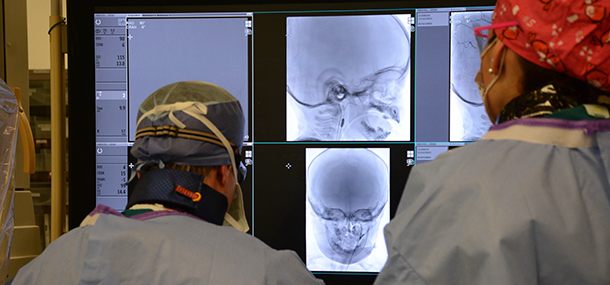
Your child is more sensitive to the effects of radiation than you are. That’s why at Cincinnati Children’s, we make every effort to reduce the amount of radiation your child receives during his or her imaging study. We use state-of-the-art equipment and innovative techniques to keep the radiation dose to your child As Low As Reasonably Achievable (a concept referred to as the ALARA principle in the medical world). While most hospitals focus on applying the ALARA principle to CT scans, at Cincinnati Children’s we have worked to significantly decrease the amount of radiation needed for all of our imaging studies, including CT, x-ray, fluoroscopy, and interventional radiology.
In interventional radiology (IR) the amount of radiation used during a procedure can be variable. At Cincinnati Children’s, our IR department is performing ground-breaking research to reduce how much radiation your child is exposed to during interventional procedures.
A study performed in our Interventional Radiology Translational Research and Simulation Lab (IR-TRSL) led to the development of new protocols that can dramatically lower radiation doses. The IR group has been able to use these new protocols to reduce radiation doses for your child by up to 97.5% during angiography (a procedure performed to evaluate the blood vessels). The results of this research were presented at the Society of Interventional Radiology (SIR) annual meeting earlier this year. The IR group has also been able to show that the radiation doses for fluoroscopy (a form of x-rays that allow us to see things in real-time) are also decreased by up to 73% during certain procedures. This new research will be presented at the upcoming Radiological Society of North America (RSNA) Annual Meeting later this month and has been selected as a featured story for the meeting.
Contributed by Dr. Timothy Singewald.